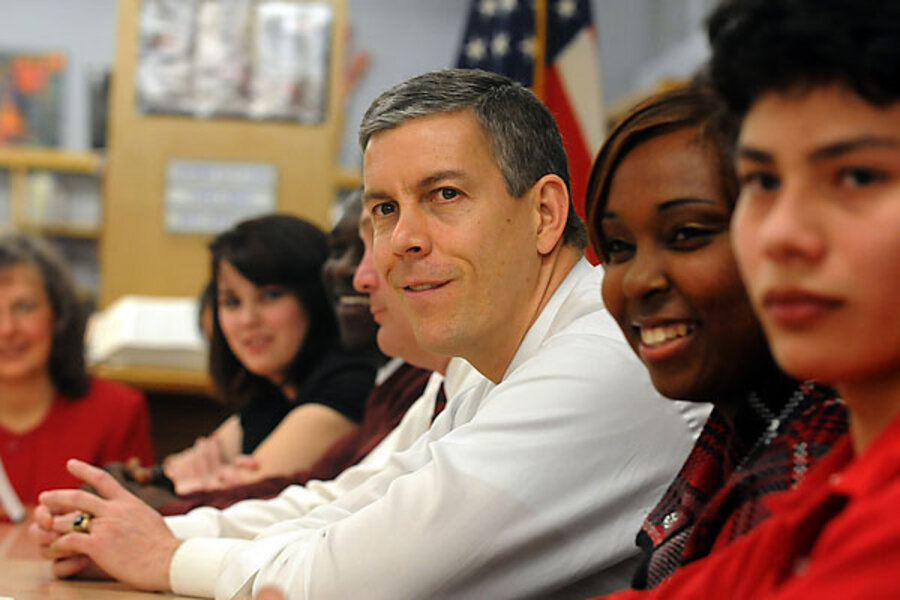Race to the Top winners: How did Delaware and Tennessee succeed?
Loading...
The Department of Education decided to limit the number of Race to the Top winners to just two states in the first round of the competition, awarding the proposals from Delaware and Tennessee.
The $4.35 billion competition was designed to spur states to develop innovative education-reform plans. The education world has been closely watching the competition to see just how high the bar for awards would be set and which states would clear it.
Monday’s announcement surprised many – both with the small number of winners and with the states failed to win. (Florida and Louisiana had been considered by some to have the most ambitious proposals.) Forty states and the District of Columbia applied for the grant, and 16 were declared first-round finalists earlier this month.
“They are signaling that three things are critical: data systems, linking teaching evaluation to student gains, and buy-in from the districts around the state,” says Grover “Russ” Whitehurst, director of the Brown Center on Education Policy and a senior fellow at the Brookings Institution in Washington.
Delaware will receive about $100 million and Tennessee will receive about $500 million to implement their proposals over the next four years. Another $350 million will go toward supporting states as they try to improve the quality of student assessments.
This means that most of the grant money – about $3.4 billion – will be available for the second round of the competition, which has an application deadline of June 1. Education Secretary Arne Duncan has said that more states – probably 10 to 15 – will receive grants in that round.
Both Delaware and Tennessee have strong existing data systems, which they have said they plan to use for teacher evaluations and for key recruitment, compensation, and tenure decisions. Also, Tennessee will allow the state to intervene in failing schools through a new “Achievement School District,” which will group together the lowest performers. And Delaware will begin requiring strong demonstrations of student growth for teachers to be labeled “effective” and to receive tenure.
Both states scored significantly higher than the third-highest scorer (Georgia), Secretary Duncan noted in announcing the winners. They impressed him, he said, with the strong buy-in they had from almost all districts and teachers unions in the states, as well as with their plans to reach every student.
“The biggest distinguishing thing for me is that the two state winners were touching 100 percent of their students,” Duncan said in a conference call with reporters. “This is about systemic change.” Some other states, he noted, had strong pilot programs but weren’t planning to implement them in all districts, with all students.
Still, Duncan brushed off the suggestion that lack of union buy-in – a liability for states like Rhode Island and Florida with otherwise ambitious plans – was an insurmountable hurdle that would eliminate states in the second round as well. “Buy-in was a piece of the application, but by no means the determining factor,” he said.
But to some observers, the decision to reward those two states indicates that such buy-in is crucial. “It puts states like Florida and Louisiana in a really awkward position,” says Andy Smarick, a fellow at the Thomas B. Fordham Institute and an employee of both the White House and the Department of Education under President George W. Bush. He’s referring to two of the states that he believes had the boldest and most reform-oriented proposals. “Now they have to ask themselves, what do we have to roll back to get union support?” he says.
There’s a danger, he adds, that states with bold proposals may now face even tougher opposition from districts and unions that think that their cooperation is crucial.
The Education Department has made all 41 applications, together with their scores and reviewer comments, available on its website. Officials say they hope states learn from one another.
“Most of the money is left on the table, so that feedback will be powerful,” says Mr. Whitehurst.





